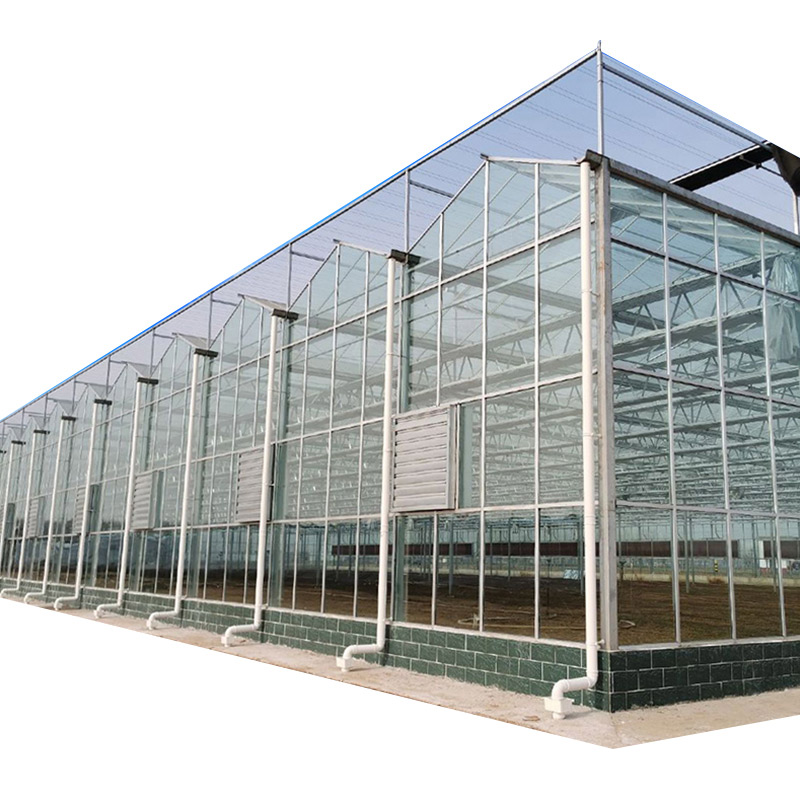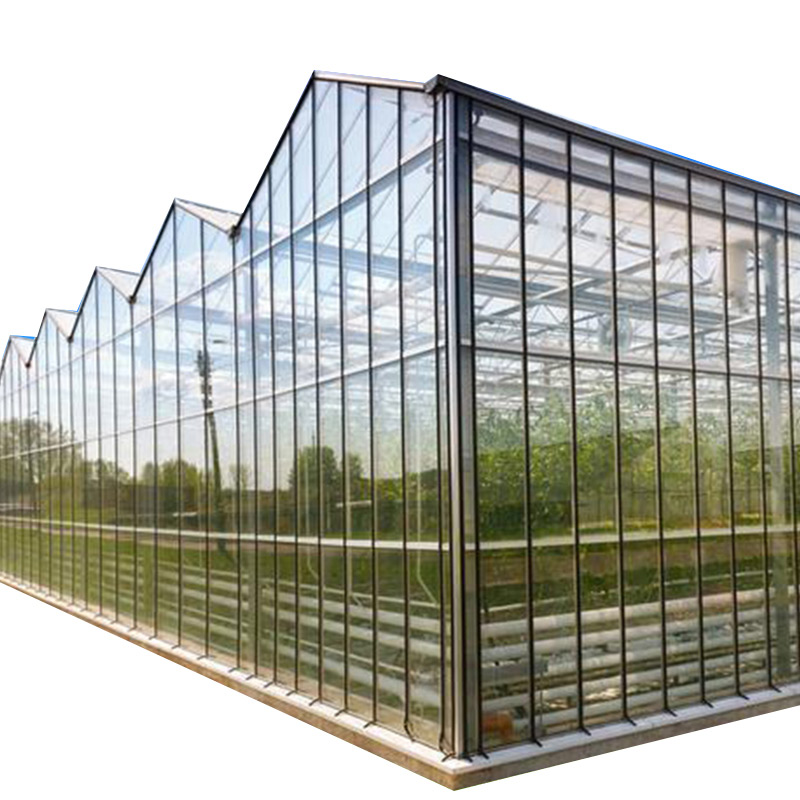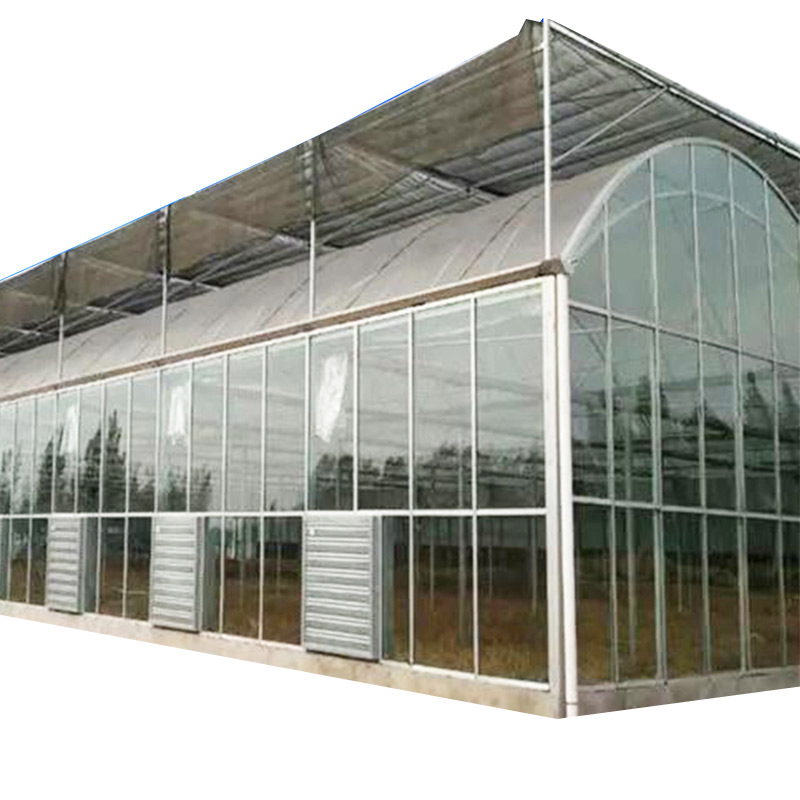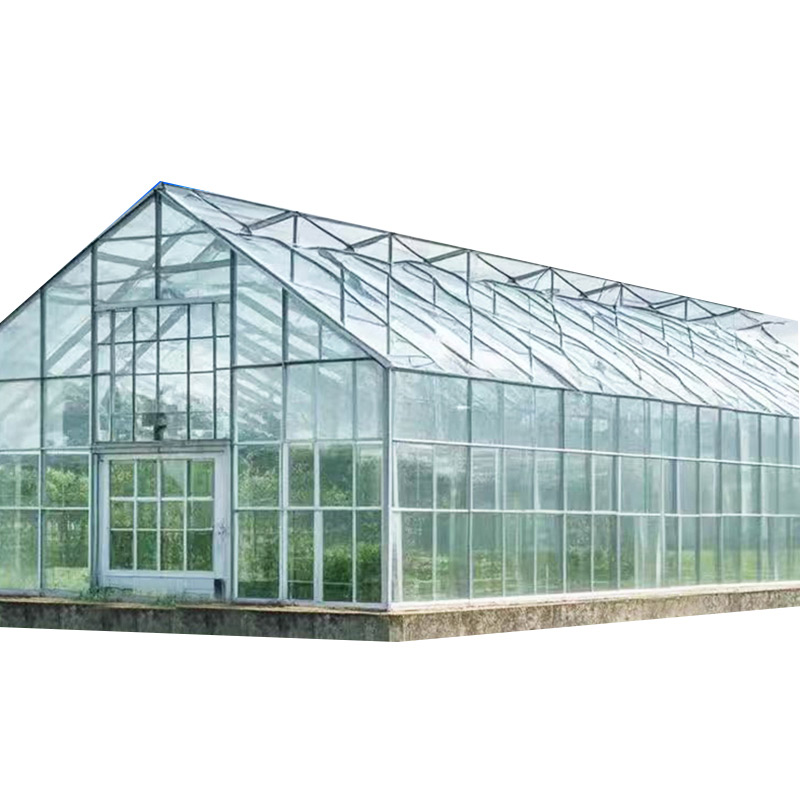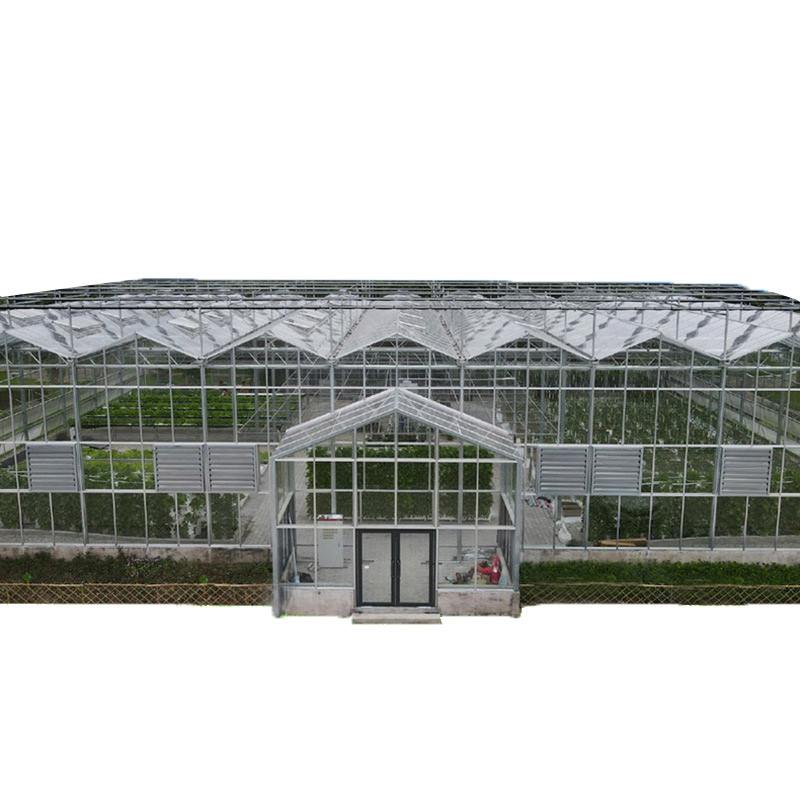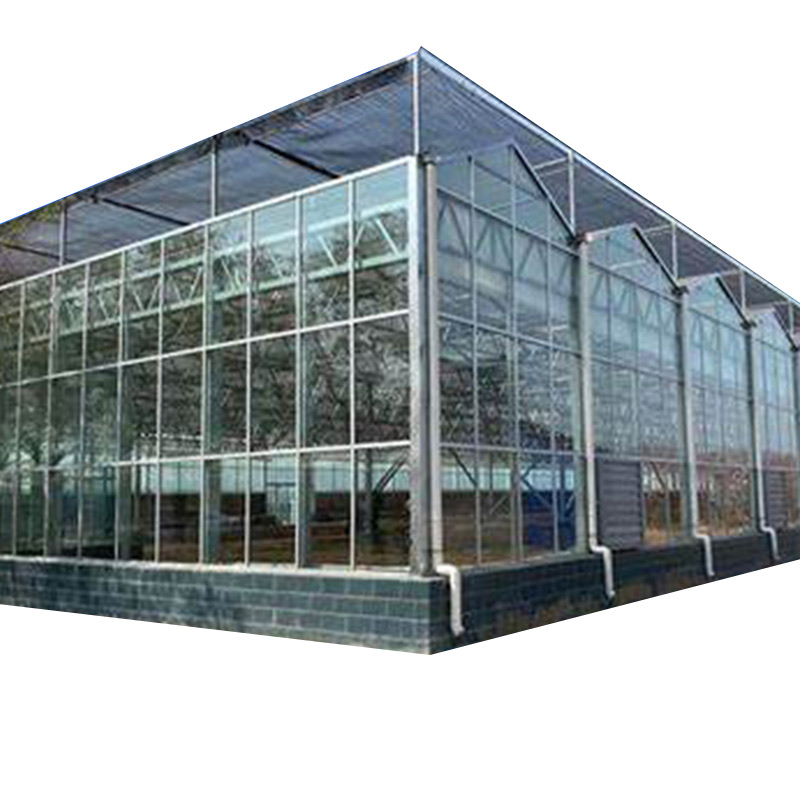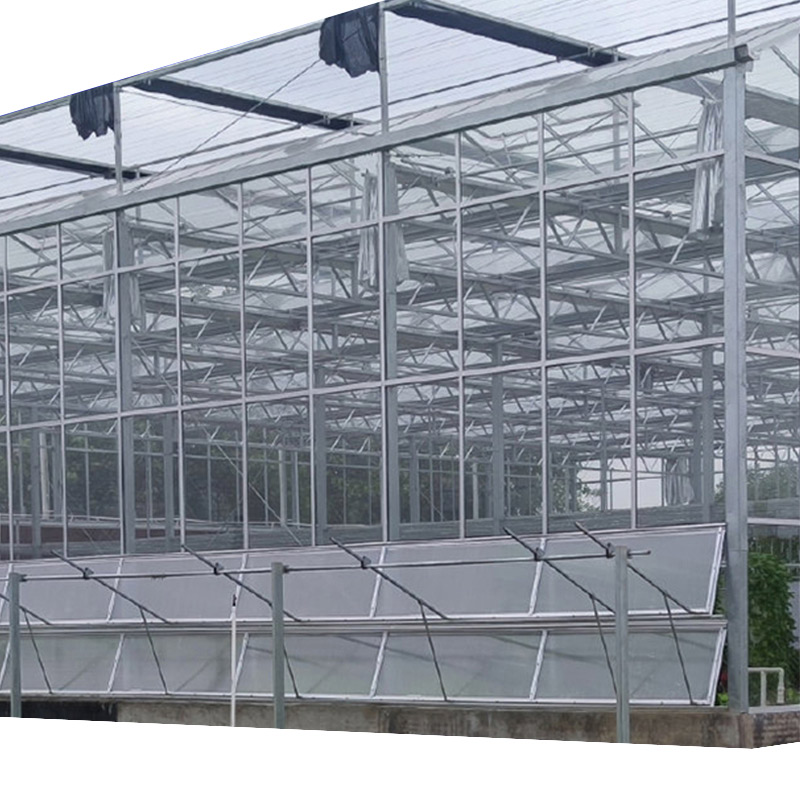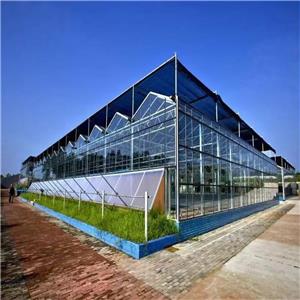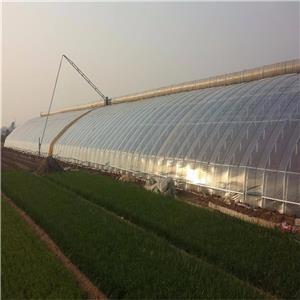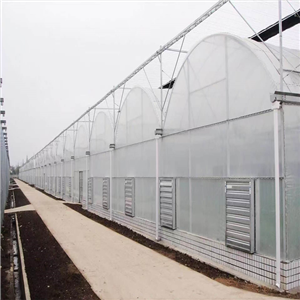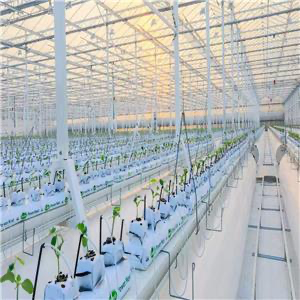
All glass greenhouse , double pane greenhouse glass and aluminium glass greenhouse are sophisticated growing structure made entirely of glass panels, offering unmatched light transmission, durability, and aesthetic appeal. Unlike polycarbonate or plastic greenhouses, it provides 90%+ sunlight penetration, ensuring optimal photosynthesis for plants. The tempered (toughened) glass construction makes it resistant to impacts, harsh weather, and UV degradation, ensuring long-term use without yellowing or weakening.
Double Layer Aluminum Glass Greenhouse
1. Introduction of all glass greenhouse,double pane greenhouse glass and aluminium glass greenhouse
The double-layer aluminum glass greenhouse represents the pinnacle of modern horticultural engineering, combining superior insulation, durability, and aesthetic appeal into one efficient structure. Designed for both commercial growers and serious hobbyists, this greenhouse type leverages two layers of tempered glass with an insulating air gap, all supported by a lightweight yet ultra-strong aluminum frame.
Whether used for year-round vegetable production, exotic plant cultivation, or research purposes, this greenhouse ensures optimal climate control, energy efficiency, and longevity.
This 3000-word guide explores:
✔ Design & structural advantages
✔ Material benefits (glass vs. polycarbonate, aluminum vs. steel)
✔ Thermal performance & energy savings
✔ Best applications (commercial, residential, research)
✔ Installation, maintenance, and cost considerations
2. What areall glass greenhouse,double pane greenhouse glass and aluminium glass greenhouse?
2.1 Definition & Key Components
A double-layer aluminum glass greenhouse consists of:
Two panes of tempered glass separated by an air gap (6–12mm) for insulation.
A high-strength aluminum frame (powder-coated for corrosion resistance).
Sealed edges to prevent heat leakage.
Optional automated ventilation, shading, and heating systems.
2.2 How It Works
The air gap between glass layers reduces heat transfer, maintaining stable temperatures.
Aluminum’s thermal efficiency minimizes condensation and structural cold spots.
High light transmission (90%+), unlike polycarbonate, which degrades over time.
3. Advantages of all glass greenhouse,double pane greenhouse glass and aluminium glass greenhouse
3.1 Unmatched Insulation & Energy Efficiency
30–50% less heat loss compared to single-layer greenhouses.
Reduces heating costs in winter and cooling needs in summer.
Ideal for extreme climates (arctic cold or desert heat).
3.2 Superior Durability & Safety
Toughened (tempered) glass resists hail, wind, and snow loads.
Aluminum frames are rust-proof, lightweight, and maintenance-free.
Long lifespan (25+ years) with minimal upkeep.
3.3 Optimal Light Transmission
No yellowing or clouding (unlike polycarbonate).
UV-resistant glass protects plants while maximizing photosynthesis.
3.4 Aesthetic & Customizable Design
Sleek, modern appearance (ideal for botanical gardens, luxury homes).
Modular expansion options (easy to add sections).
3.5 Ideal for High-Value Crops
Perfect for orchids, cannabis, berries, and hydroponics.
Used in research labs, universities, and commercial nurseries.
4. Comparison: Double-Layer Glass vs. Other Greenhouse Types of all glass greenhouse,double pane greenhouse glass and aluminium glass greenhouse
| Feature | Double-Layer Glass | Single-Layer Glass | Polycarbonate | Plastic Film |
|---|---|---|---|---|
| Insulation | Excellent (air gap) | Poor | Good (multi-wall) | Very Poor |
| Light Transmission | 90%+ (no degradation) | 90%+ (no degradation) | 80–88% (degrades) | 70–85% (short lifespan) |
| Durability | 25+ years | 20+ years | 10–15 years | 2–5 years |
| Cost | High initial cost, long-term savings | Moderate | Affordable | Cheap but replaceable |
| Best For | Year-round professional growing | Mild climates | Budget growers | Temporary setups |
Conclusion: Double-layer glass is the premium choice for growers prioritizing durability, efficiency, and high yields.
5. Structural Design & Technical Specifications of all glass greenhouse,double pane greenhouse glass and aluminium glass greenhouse
5.1 Frame: Why Aluminum?
Lightweight yet strong (handles snow/wind loads).
Corrosion-resistant (powder-coated finish).
Thermally broken options (reduces condensation).
5.2 Glass Specifications
4–6mm tempered glass (shatter-resistant).
Low-iron glass (for even clearer light).
Argon gas-filled gap (optional for better insulation).
5.3 Climate Control Systems
Automatic roof vents (temperature-triggered).
Shade screens & heating systems (for precision farming).
Hydroponic & fogging integration (advanced setups).
6. Best Applications of all glass greenhouse,double pane greenhouse glass and aluminium glass greenhouse
6.1 Commercial Agriculture
Winter vegetable production (tomatoes, cucumbers, leafy greens).
Floriculture (roses, orchids, tulips).
6.2 Research & Education
University botany labs.
Seed breeding & genetic studies.
6.3 Residential & Luxury Gardening
Year-round herb & organic veggie growing.
Conservatories & garden showcases.
7. Installation & Maintenance
7.1 Installation Tips
✔ Level concrete foundation (prevents structural stress).
✔ Professional assembly recommended (for sealing & alignment).
7.2 Maintenance Guide
✔ Clean glass 2–3 times/year (vinegar solution).
✔ Check silicone seals (prevents air leaks).
✔ Lubricate vents & moving parts.
8. Cost Analysis & ROI
Initial cost: $50–150 per sq. ft. (higher than polycarbonate).
Long-term savings: 30–50% energy reduction.
Increased crop yields justify investment in 3–5 years.
9. Conclusion of all glass greenhouse
A double-layer aluminum glass greenhouse is the gold standard for serious growers who demand durability, efficiency, and premium plant-growing conditions. While the initial cost is higher, the long-term benefits (energy savings, higher yields, low maintenance) make all glass greenhouse a wise investment.
Ideal for:
✅ Commercial growers
✅ Research institutions
✅ Luxury home gardeners
Need help choosing a model? Let me know your climate and growing goals for tailored recommendations!


